Growing Blog
Candidates For Cultivation: The Reishi Mushroom
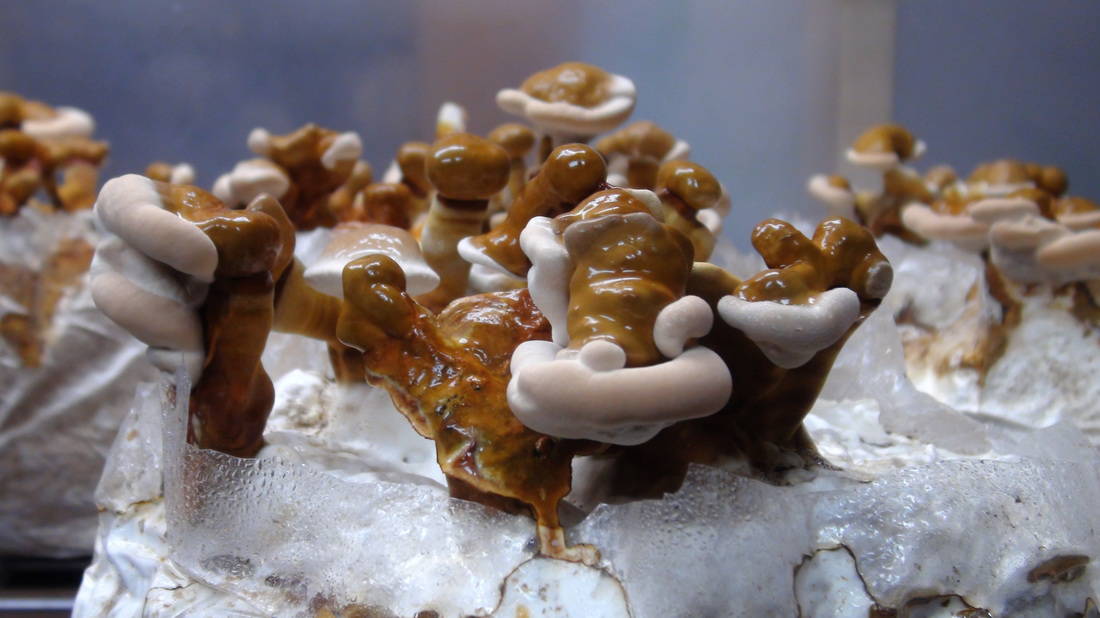
Contents
(This article is mainly about growing reishi. Looking to learn about the health benefits of Reishi Mushrooms? Click here!)
Growing the Reishi Mushroom is a good choice for the home cultivator.
Not only has it been long revered for its medicinal properties, the Reishi is also fascinating to watch grow – and it’s fruits are stunningly beautiful.
It is rather easy to grow, fast to colonize and resistant to many forms of contamination.
It can be grown in two different forms, namely the conk form and the antler form, depending on the amount of fresh air it receives.
Scientific Name: Ganoderma lucidum
General Description
The Reishi mushroom naturally takes on the “conk” formation unless it is grown in a high CO2 environment, which cause it to form antlers. It is a polypore and naturally forms on the side of dead or dying hardwood trees.
The top side is shiny, and can come in a variety of colors, red/orange being the most common. Reishi mushrooms don’t have gills, but rather pores, from which brown spores are released.
Reishi is a strong fruiter, sometimes even pushing through the filter patch on a grow bag.
The mushroom is extremely woody and bitter, not good for culinary use. However, teas and tinctures can be made to extract the medicinal compounds from the mushroom.
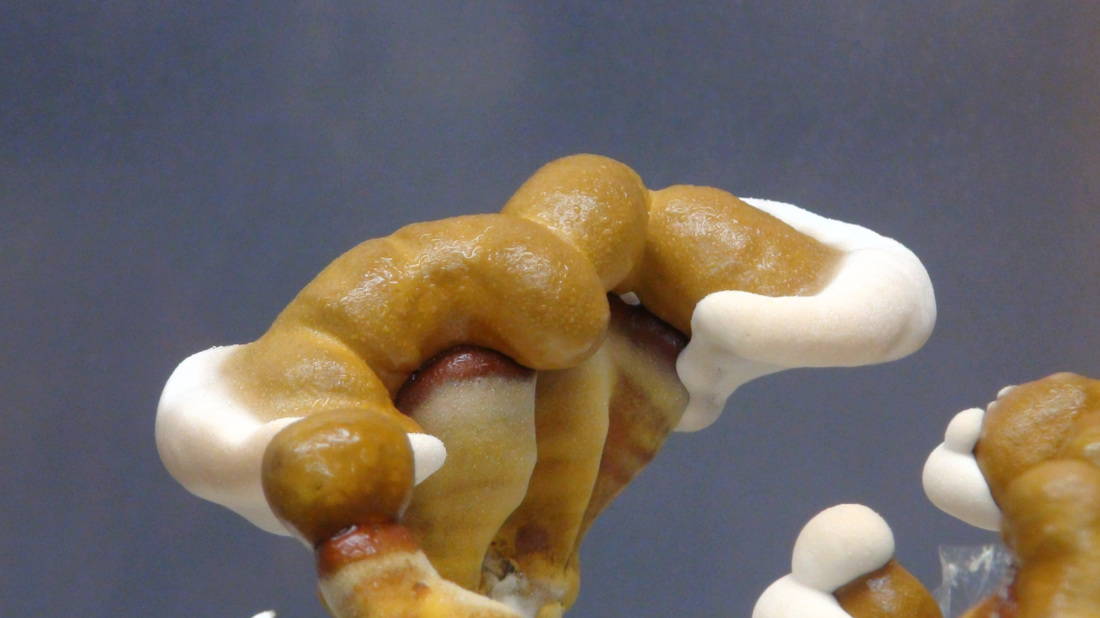
A Reishi “conk” starting to form.
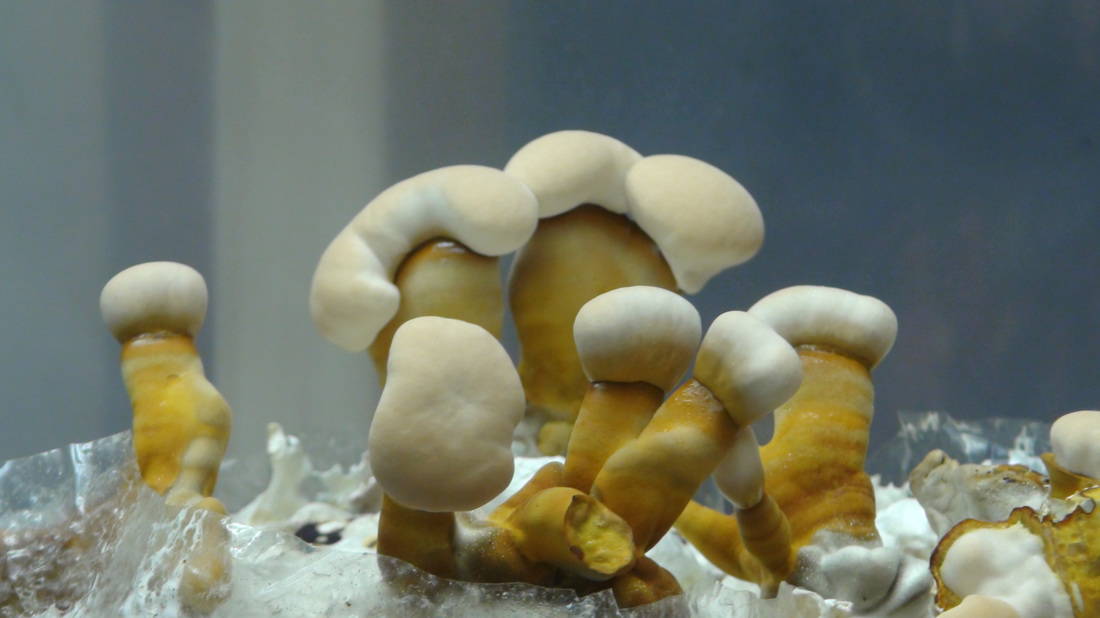
Reishi “antlers” starting to transition into “conks”
Natural Habitat: Usually found on dead or dying hardwood trees and stumps. Found May-November in warmer temperate regions. Widely distributed throughout the world.
Difficulty of Cultivation: Easy to Medium.
Agar: Reishi looks very unique on agar. Glowing white rhizomorphic strands emanate from the center of the plate. The mycelium is incredibly tough and even difficult to cut through with a scalpel.
Spawn Types: Reishi grows well on Rye and other grains. Not suggested to use sawdust because it so tenaciously holds the sawdust together, making it difficult to use as spawn. Reishi spawn is difficult to break up in jars, make sure to not let the grains consolidate too much before spawning. May have to break apart with a spoon.
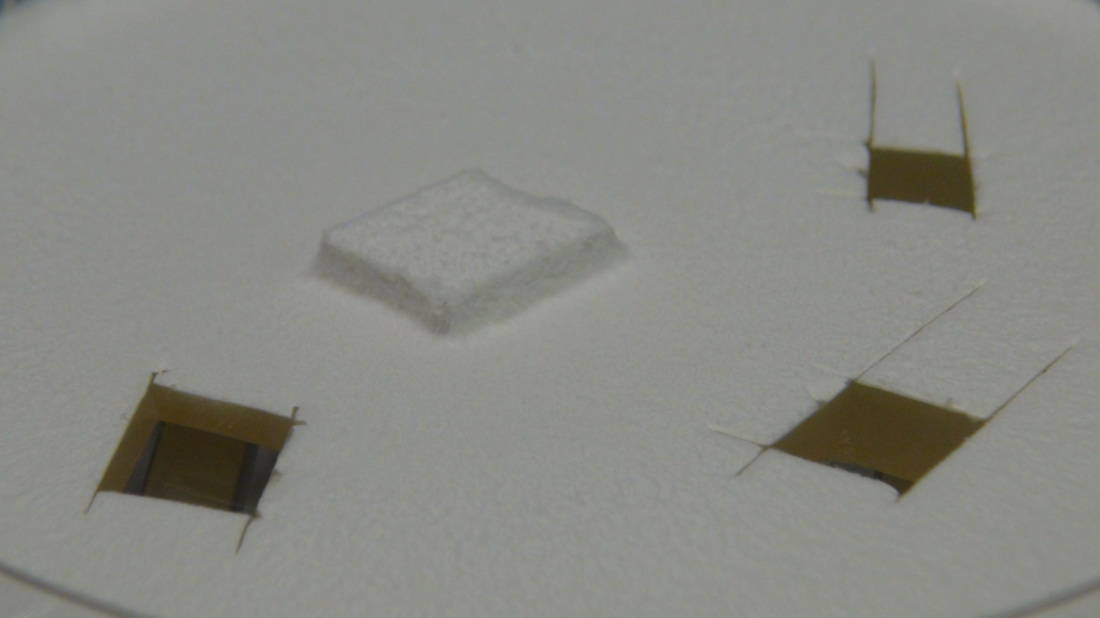
Close up of brilliant white Reishi on Agar.
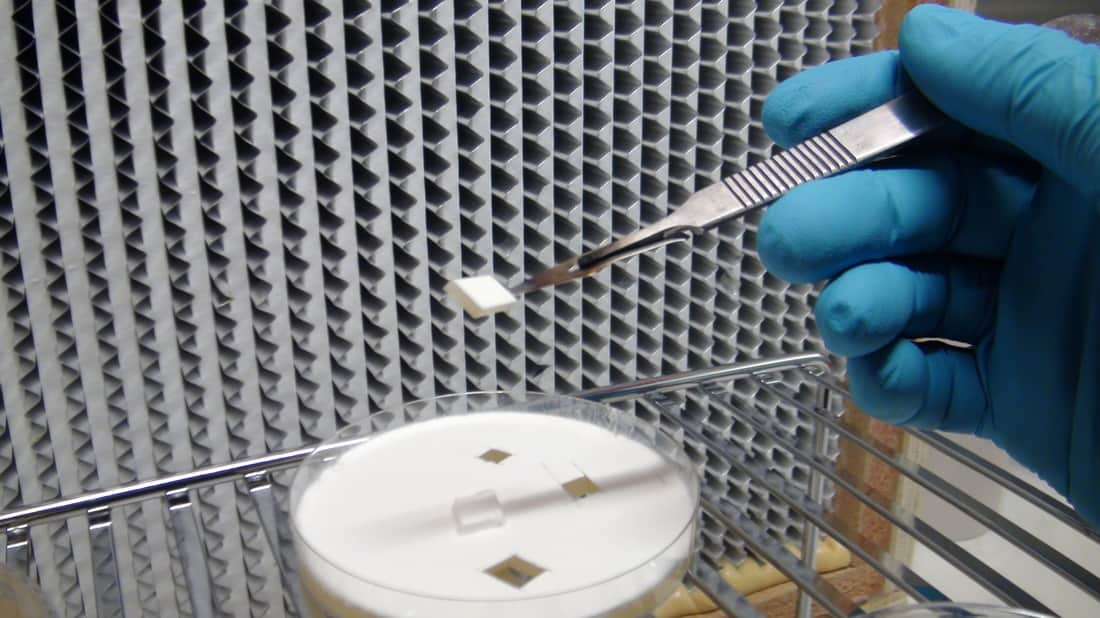
Transferring a wedge of Reishi. Scalpel required
Substrate Types: Supplemented hardwood sawdust. Reishi will not do well on straw. It is also possible to inoculate hardwood stumps with Reishi plugs for outdoor cultivation.
Fruiting Containers: For indoor cultivation, use large autoclavable grow bags. Allow antlers to form inside the bag on the top of the block. Once the antler has reached desired size, cut off the top of the bag and bring the block into fruiting conditions, The increase of fresh air will cause the reishi to start forming spore producing “conks”.
Yield: Typically, Reishi mushrooms will only produce one flush. 1/2 lb of mushrooms is typical from a 5lb block. For biggest yields, allow the mushrooms to form conks instead of the antler form. This is done by allowing lots of fresh air exchange in the growing environment.
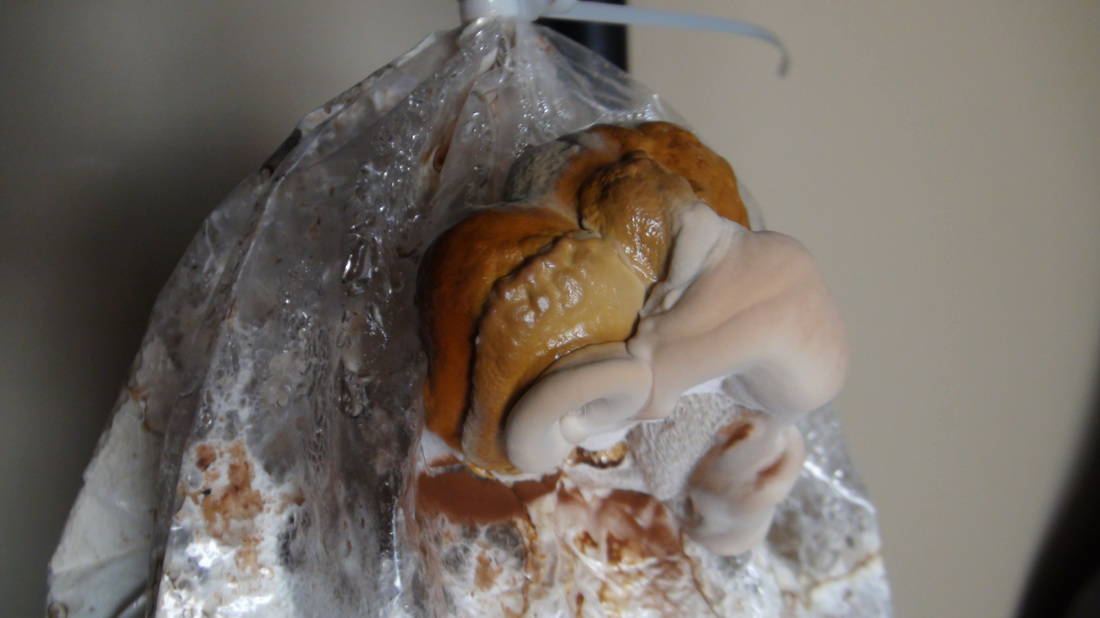
Reishi conk stubbornly forming through a filter patch.
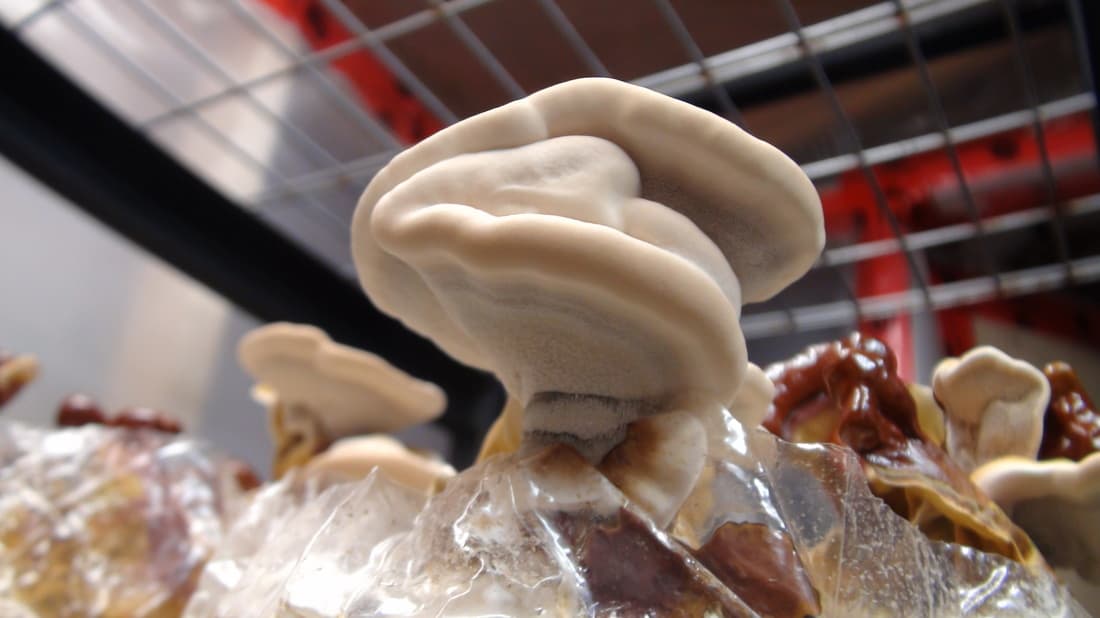
The underside pores of a Reishi conk.
Harvest: Harvest Reishi mushrooms just before the fruitbody drops spores. The Reishi mushroom has a heavy spore load which can cover a grow room with brown spores in no time. Use a sharp blade or serated knife to cut the mushroom off the block. You may have to saw through the mushroom, as it is incredibly tough, Usually the block is discarded after the first flush. Dry Reishi mushroom slices in a dehydrator for long term storage.
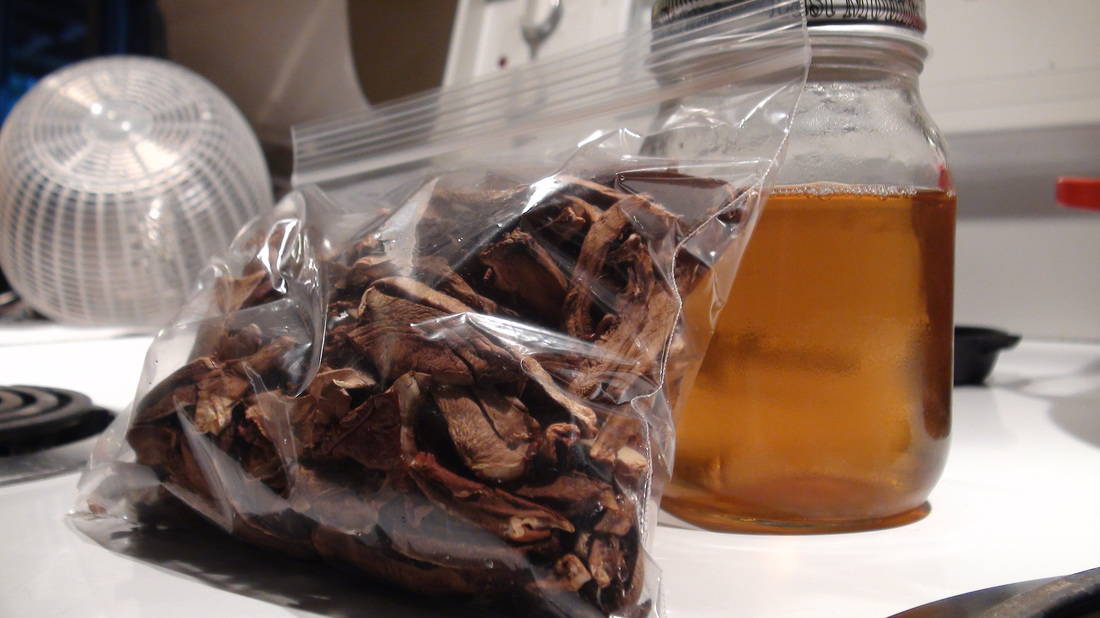
Some harvested and dried Reishi with some tea ready for the fridge.
Weakness: Reishi mushrooms are resilient against contamination, but the spawn is incredibly tenacious making it hard to break up the spawn. This can make it difficult to spread evenly in the grow bag. Reishi will sometimes start forming fruitbodies before the block is done colonizing. Difficult to harvest.
Cooking: Reishi mushrooms have no culinary use, as they are extremely woody and bitter. Only a brave soul would try to cook with Reishi, but the best option would be as a dry powder sprinkled in dishes. They are better known for their medicinal properties. Boil fresh Reishi mushrooms in water for 20-30 minutes in order to extract medicinal compounds and make a tea. Dried Reishi must be boiled for longer 1-2 hours. Thea tea is extremely bitter. Can be stored in the fridge for a number of days after preparing the tea.
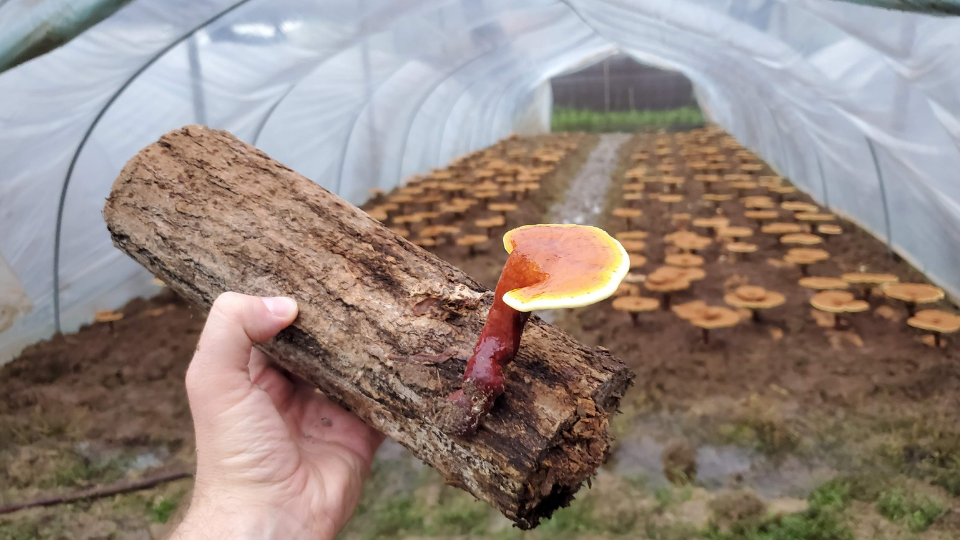
Reishi being cultivated naturally on logs.
The Specifics
Spawn Run:
Incubate grain spawn at room temperature for 10-14 days. Ensure to break up spawn and inoculate substrate as soon as colonization is complete.
Initiate Pinning:
Lower temperature slightly to around 18 deg C. Increase humidity to 95%. Usually Resihi will start to fruit in the grow bag.
Fruit Development:
Once antler are desired size of stem, cut off the top of the bag and place in grow room. Humidity 85- 90%. Room temperature is fine. Can take 30 + days to form full conks.
Try Growing Reishi at Home!
The Reishi mushroom is a great choice for the home cultivator. Resistant to contamination, and a strong colonizer makes them a delight to grow at home. They are incredibly beautiful to watch grow and produce unique formations. The can be grown without specific grow room conditions, and can even be grown inside the grow bag. The harvest can be dried in a dehydrator and stored for long term use. Try growing Reishi mushrooms at home! Start today!
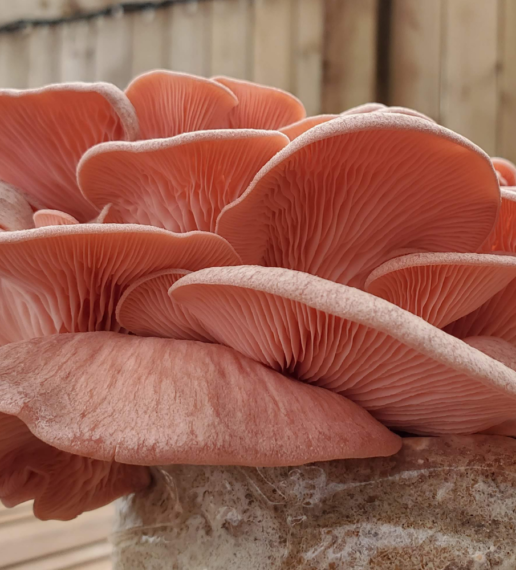
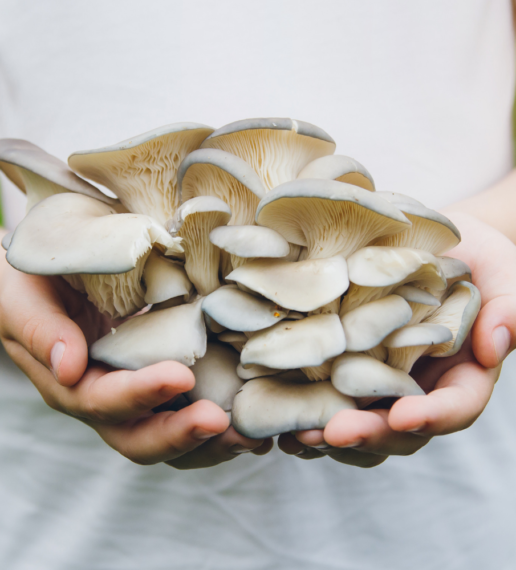
Excellent presentation and photographs
Would like to know the optimal fruiting grow temperature. You just mentioned room temperature.
Ross…..hobbyist (Australia..Cairns)
Hey Ross,
Thanks for reaching out! Anywhere from 18-24 deg C would likely be optimally for fruiting Reishi. The exact best temperature will depend on strain, substrate type and a number of other variables. I would suggest to experiment in that range and see what works for you!
All the best,
Tony
In Philippines where temp is avg32c reishi wouldn’t grow well there?
It definitely can, probably comes down to strain selection. Certain strains will grow better in warmer temperatures.
Hi, I’m curious if you hallucinate like on other magical mushrooms. I am in china right now and came across some Red Reishi mushrooms and was wondering if it would be worth it to try and make my own tea?
Hey Rick! Definitely not, there are no hallucinogenic compounds in Reishi. Just amazing health benefits- you can make your own tea by steeping the fruiting body in hot water for a number of hours. Be careful though- it is extremely bitter!
RICK I too live in China. Looking for Reishi again. My Chinese medicine man no longer carries them. Shanghai. Connect with me on wechat. springsgolfsolutions
What is the best type of lights for reishi?
Just ambient room light will work fine. If you are goring indoors, consider using a florescent light.
Hey your articles and youtube videos are very helpful! Thank you for your contributions.
I started to grow reishi mushrooms on the 12th. I started from a spore syringe in wheat grain. How much time should it take for the spores to sprout? or did the only option was to use an agar culture?
Hey there! Thanks for checking it out!
Was it a spore syringe or a liquid culture? If it was a spore syringe, I am not sure… would definitely take longer if it could work at all. If it is a liquid culture, it should start to grow in a couple days, Reishi mycelium can grow really quick!
Hey I have a 4 year old bag of dried reshi. Do you think its possible to clone them at this point on agar? If so what agar tek would be best for this?
Hey Joshua! Definitely too old, you need fresh specimens for cloning. Best bet would be to get a new culture. Happy growing!
hi.i have been growing this mushroom for a year. i have two problems.
1) how can i plant a mushroom without autoclave sawdust bags?
2)what to do with green mold on the substrate?
thanks so much…
Hey Saba!
1. You can always try growing on logs and stumps outside, or depending on the species, pasteurized sawdust or straw in buckets, or many other containers. Mushroom grow bags are not 100% necessary.
2. That just means the substrate was not properly prepared, or there is another part of the process that was not sterile when it needed to be. Need to reasses your procedure and see where contamination might have taken hold.
I have a fully colonized substrate block in the growbag, but it hasnt started forming antlers after 4 weeks from spawn to bulk. Anything I should do?
Hey Phillip! That is weird that it hasn’t started forming antlers yet… perhaps it is a strain issue… I would try introducing it to some light if you haven’t yet, and then poking some holes in the bag to bring in more fresh air which might trigger pinning. Alternatively, you could cut a slit across the front of the bag and see if you can start forming a conk.
Thanks. Will punch some holes in the top of the bag for fresh air exchange. The mycelium has climbed all the way to the top of the bag and created big soft mycelium flaps that now just hang there…
This is exactly what’s happening to my bags! They look pure white colonised, but struggle to get proper pinning… they are at 18° and 95%humidity. I tried to leave some bags closed, others just a bit, and others fully exposed….and no changes. No pins, nothing. Just pure white micellium block
Following. Mine is doing the same fully colonized no fruit 🙁
Hola Toni como elegir un buen reishi para cultivo Saludos desde Argentina
The best substrate is mahogany sawdust with wheat bran.
https://www.researchgate.net/publication/280731073_Artificial_Cultivation_of_Ganoderma_lucidum_Reishi_Medicinal_Mushroom_Using_Different_Sawdusts_as_Substrates
Hey ya’ll! Recently made a Resihi with Rooibos tea and was wondering, how long will the tea be good for in the fridge?
Tony, love all your video lessons. I’m learning a lot. I’m particularly interested in reishi mushrooms an a semi commercial scale. I like your low tech approach. How many pounds per square foot can be produced?